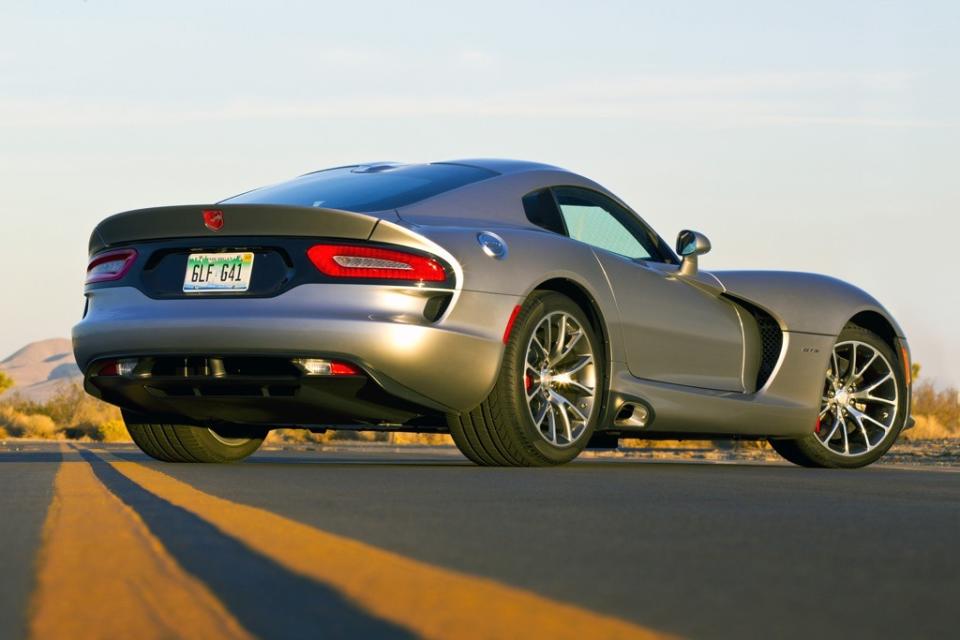The Dodge Viper Needs To Die

According to a product plan revealed in a tentative deal between Fiat-Chrysler and the United Automobile Workers, the Dodge Viper supercar is on the verge of death. The only way the venerable Viper can survive past 2017 is if a legitimate business case is made for its continuation.
The problem is, there isn’t one.
When Dodge (or SRT, depending on what polo the execs were wearing that day) brought the Viper back in 2013 after a three-year hiatus, it did so with an ambition of selling 1,600 units annually. To achieve this, Dodge/SRT planned on taming the super car’s infamous habits: “I want the new Viper to be a more forgiving car to drive and accessible to more people,” said Ralph Gilles, SRT’s then-CEO. “We’ve never had stability control on a high-performance car, which is about to happen on the new car.“
The cabin was now civilized, festooned in the same leather Ferrari uses, and the engineers said your legs wouldn’t melt if you drove it for more than ten minutes. At the new car’s first drive event at Sonoma Raceway, I lauded its ability to retain that inherent Viperness while feeling less like a V-10-powered death trap. Soon after, I spent two weeks with the 645 horsepower Viper GTS at home. I even went balloon shopping in it. People threw themselves into the road in front of me, seemingly content to die by serpent. Camera phones flashed in every direction. The attention it drew was almost disconcerting. I imagined this was what life was once like for David Hasselhoff.

And there were many problems. While your right leg would indeed no longer melt, it did still get rather toasty. To even it out, the side exhaust would deliver third-degree burns every time you tried to climb out—if you could get out.
The engine note retained a quality John Deere would approve of. The ride was as harsh as a go-kart. At over $120,000, the Viper was rather expensive when compared to, say, a Corvette Z06. And while there was now a quality navigation and radio in place, you couldn’t hear any of it because the noise within the cabin was so deafening it made your ears bleed. After 30 minutes, you wanted to get out. But as we’ve established, that’s not possible.
It was clear, then, that this newest generation Viper was much of the same as its forebears. Tamed, to a degree, but still mighty raucous—a car only for those with cash to burn and leg hair to match. So it came as no surprise when Dodge failed to meet its sales targets; in 2014, just 760 Vipers were sold. Through September 2015, despite a $15,000 price drop, only 503 units have left dealerships.
That price drop came in the wake of Viper production being halted at its Conner Avenue Assembly plant in Detroit. America’s homegrown supercar lay stagnant on showroom floors, and for more than two months, zero cars were built until demand caught up: “[The Viper] was never intended to be a high-volume car,” said Dodge’s CEO, Tim Kuniskis. “It’s always been intended to be a very high-performance, exclusive car.” Indeed, Kuniskis dubbed the Viper a “halo car” for Dodge, one that—regardless of sales—was vital in branding the company to its buyers and differentiating it within the Fiat-Chrysler empire. Dodge was to become aggressive, sinister even; cars for enthusiasts by enthusiasts.
This made perfect sense, except that the Viper isn’t Dodge’s halo car. That title goes to the 707-horsepower Challenger and Charger Hellcats. In a year’s time, the ludicrously obnoxious and wildly wonderful Hellcats became the darling of the automotive media; Yahoo Autos named it our Enthusiast Car of the Year. Buyers were paying way over sticker to get one—that is, if they could find one.

 Yahoo Autos
Yahoo Autos 